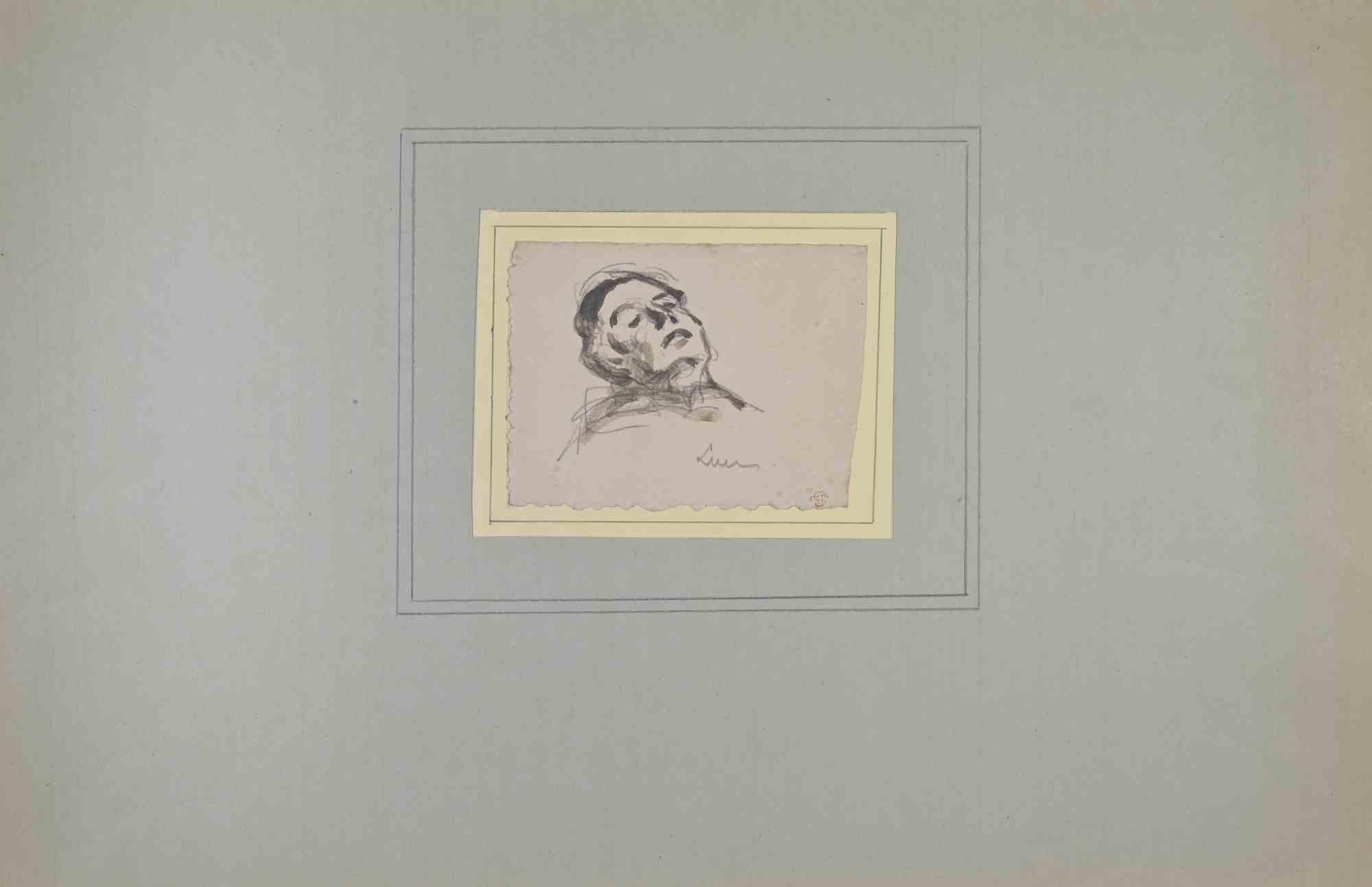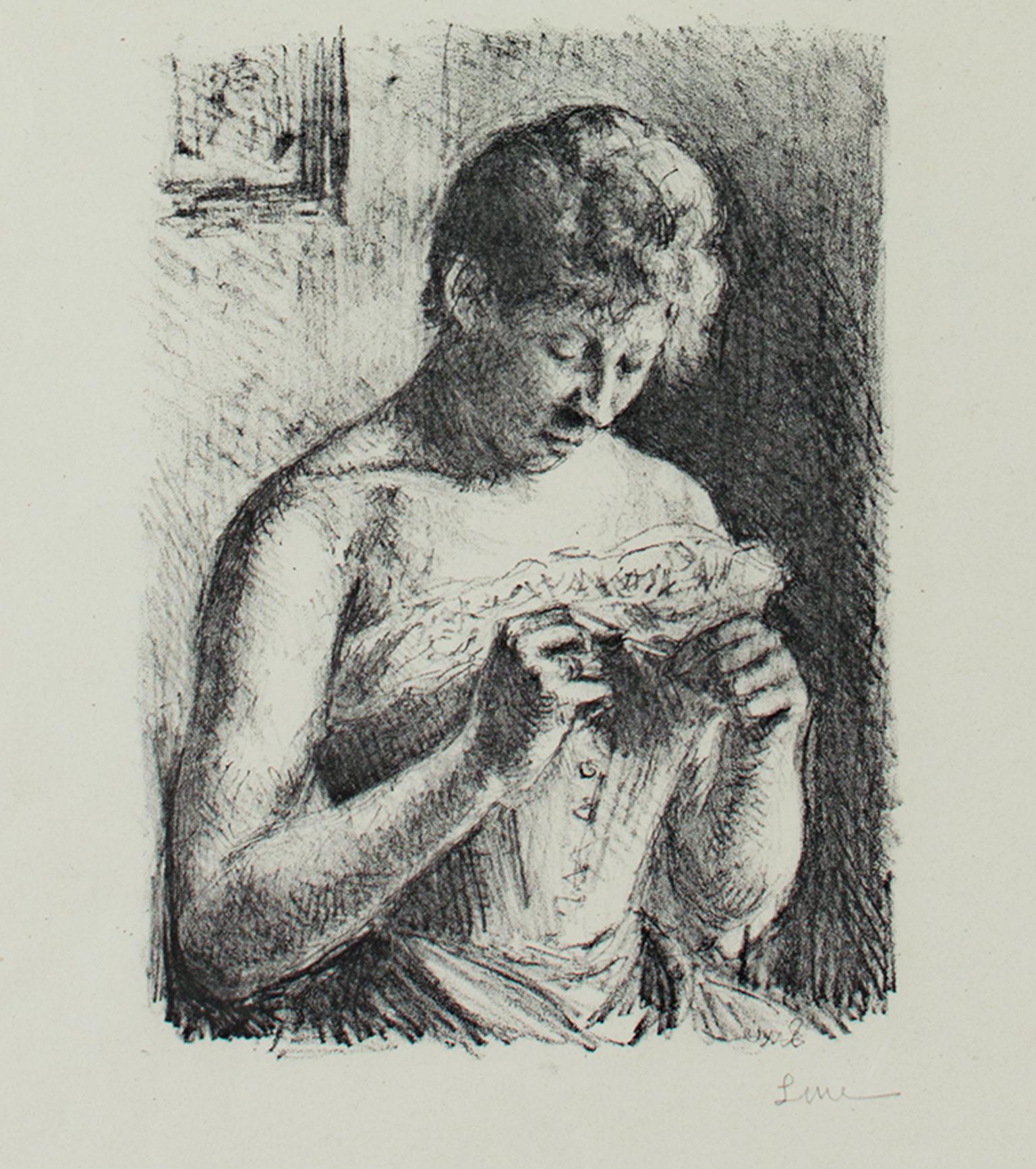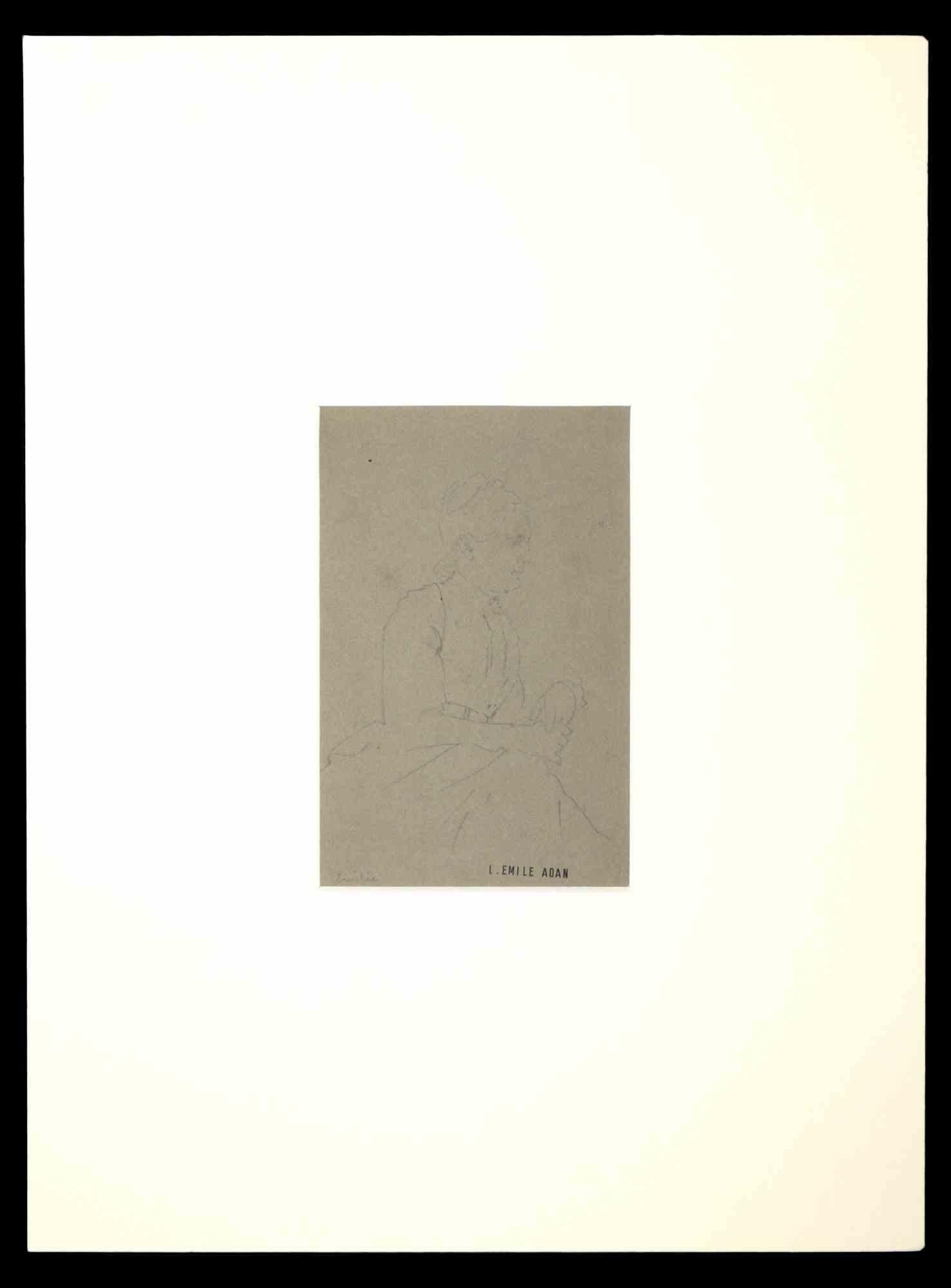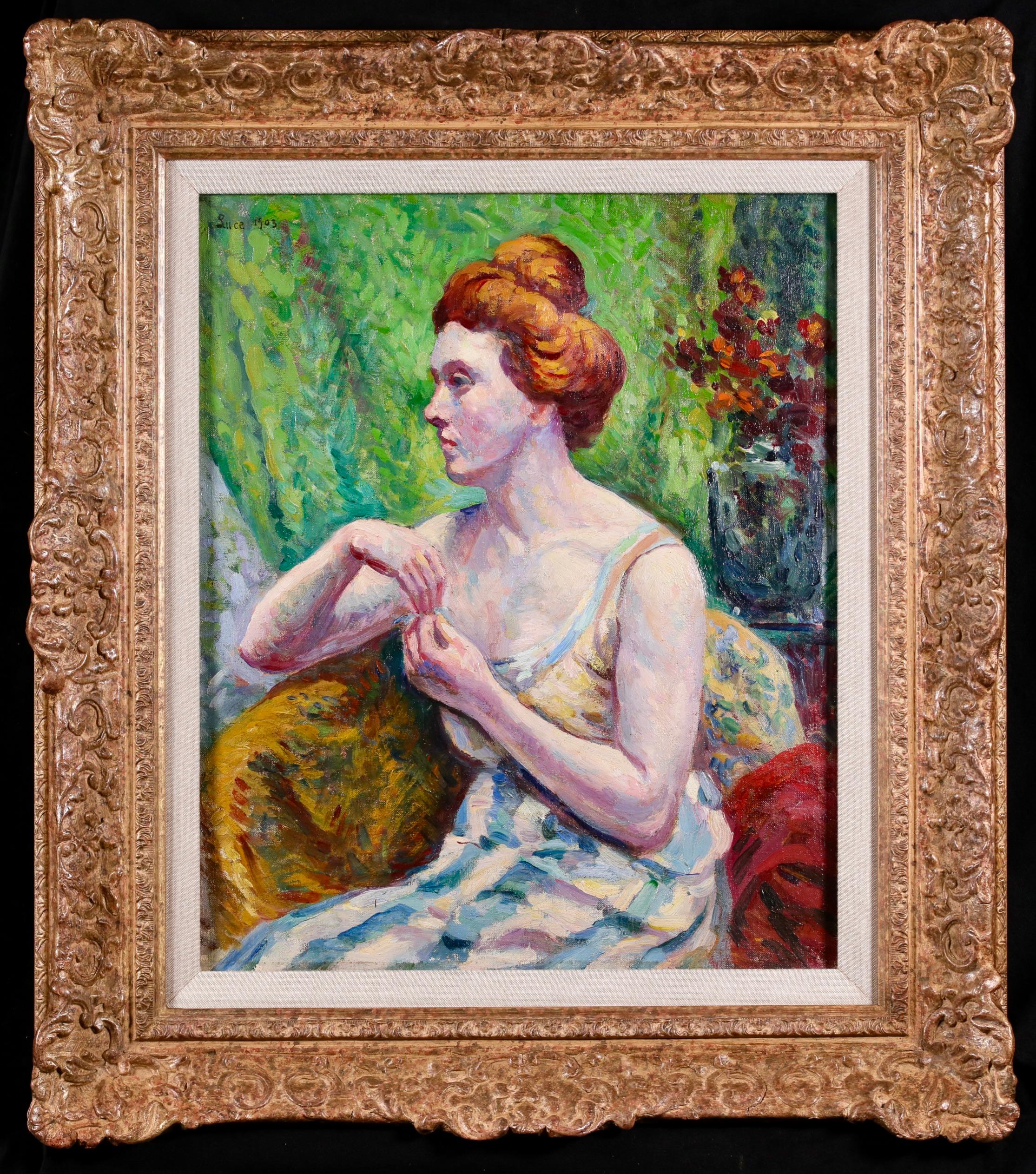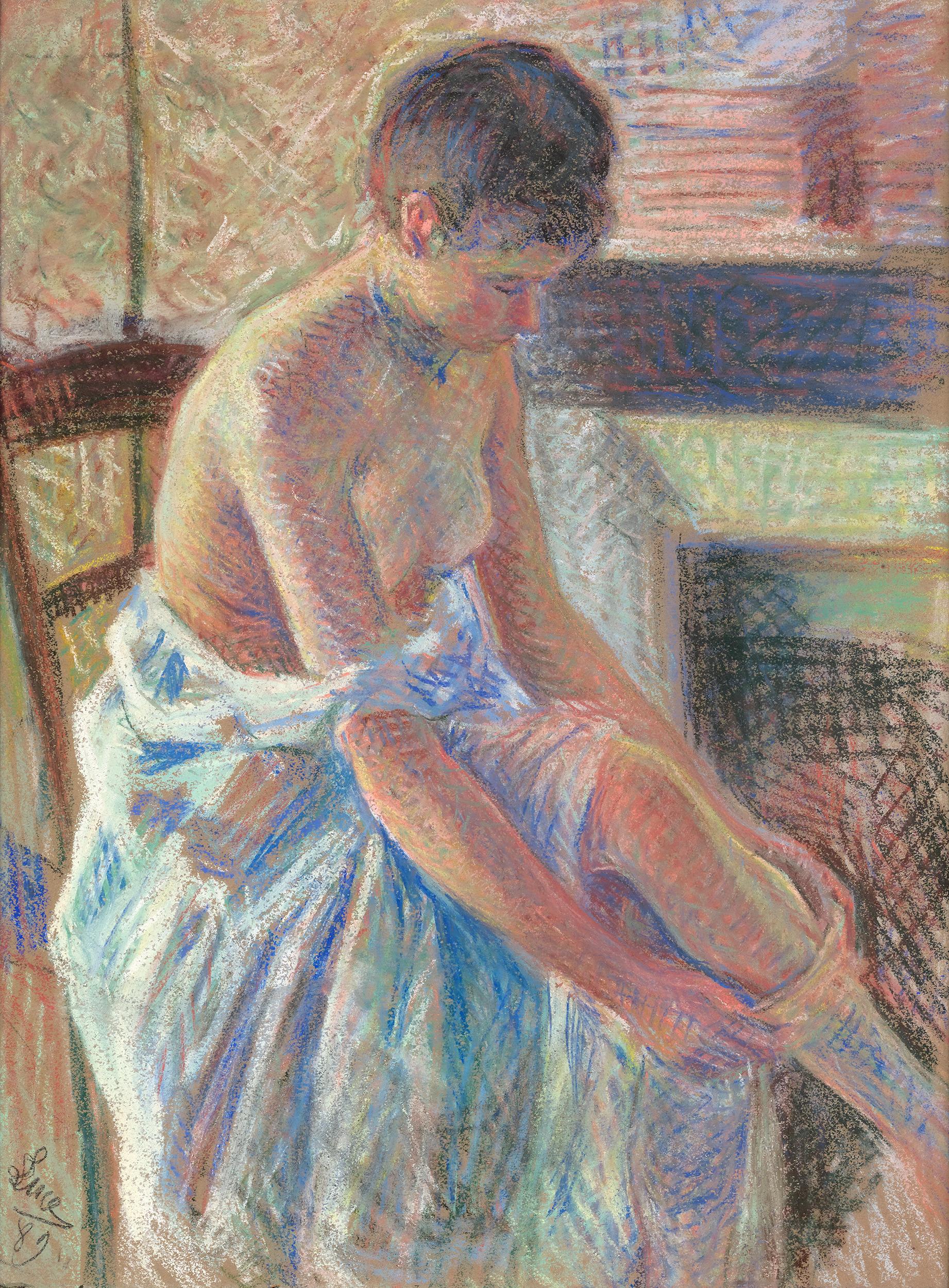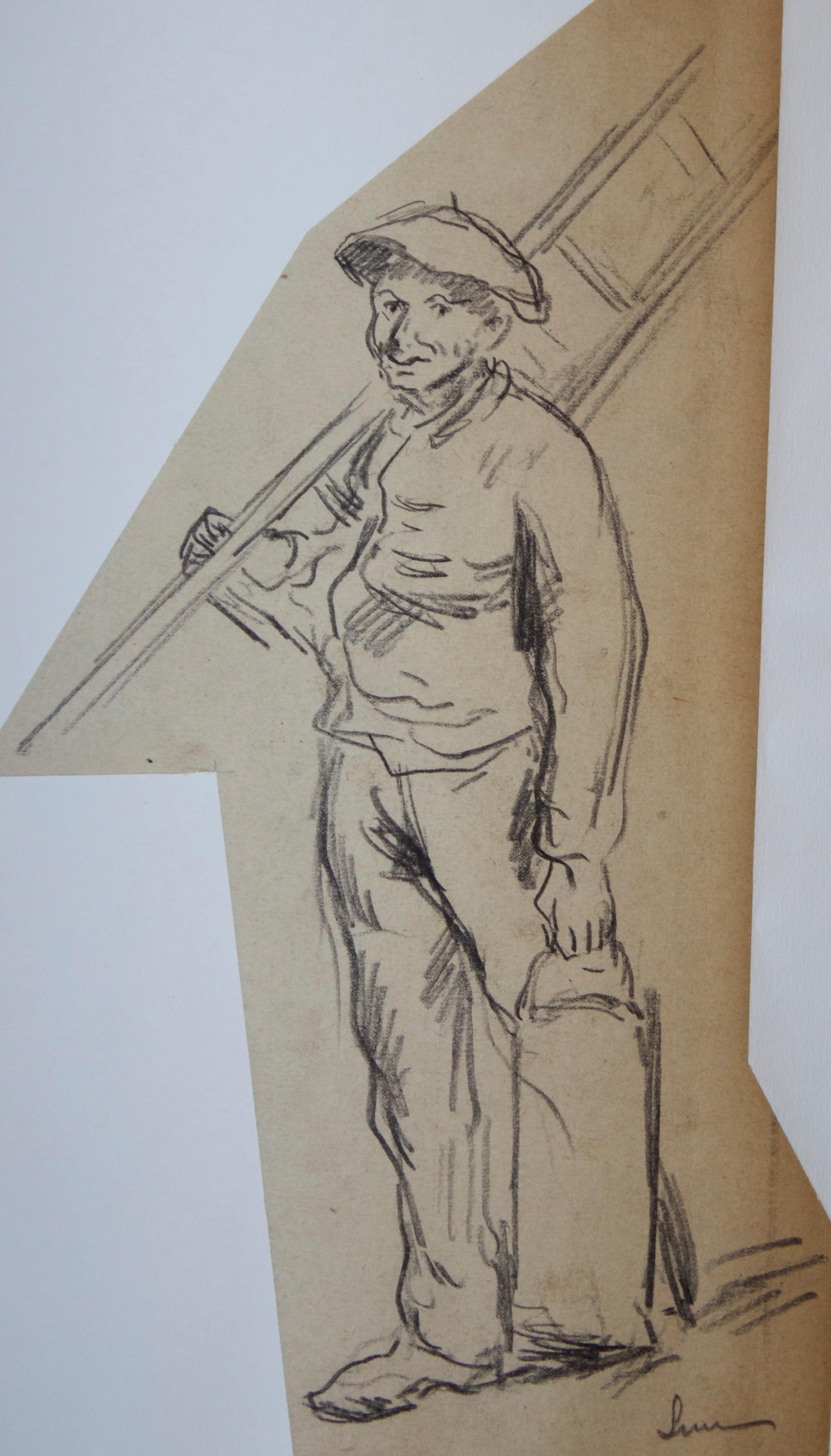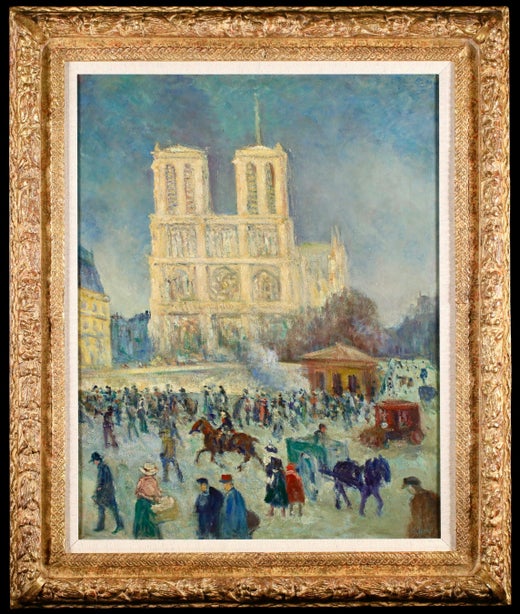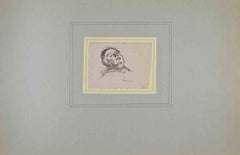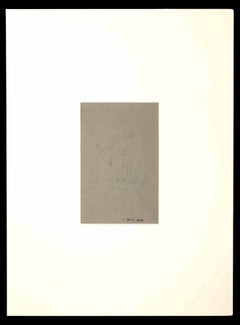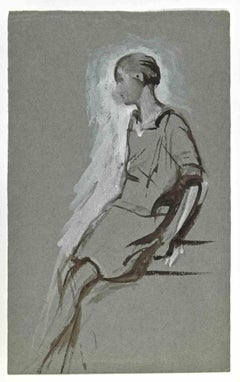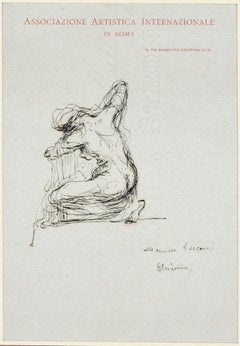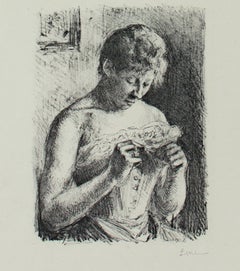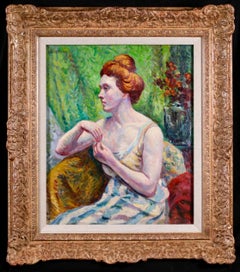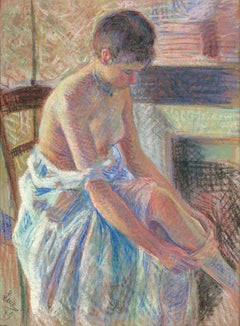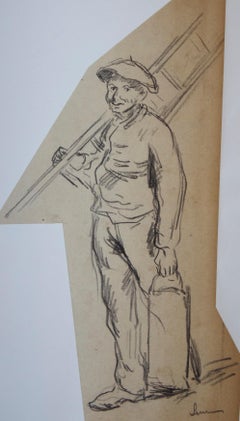Maximilien LuceWoman - Drawing by Maximilien Luce - Early-20th CenturyEarly-20th Century
Early-20th Century
About the Item
- Creator:Maximilien Luce (1858-1941, French)
- Creation Year:Early-20th Century
- Dimensions:Height: 5.32 in (13.5 cm)Width: 3.15 in (8 cm)Depth: 0.08 in (2 mm)
- Medium:
- Movement & Style:
- Period:
- Condition:Insurance may be requested by customers as additional service, contact us for more information.
- Gallery Location:Roma, IT
- Reference Number:Seller: T-1529161stDibs: LU650315731172
Maximilien Luce
Maximilien Luce was born in Paris in 1858. In 1876 he apprenticed in the shop of the engraver Eugène Froment (1844–1900), a qualified craftsman and graduate of the Ecole des Arts Décoratifs. There, Luce worked on numerous illustrations for French newspapers and foreign periodicals.
In 1877, Luce left Paris and went to London. When he returned to France in 1879 he was called for military service. It was during his military service that Luce met Charles Emile Carolus-Duran (1837–1917), the famous French painter and sculptor who was an instructor to countless artists. Luce entered Carolus-Duran’s studio, a move that not only provided him with meticulous training as a draftsman but also introduced him to the leading painters of the time. Luce met Camille Pissarro (1830–1903), with whom he became very good friends and who gave Luce much artistic advice. Along with Pissarro, Georges Seurat (1859–1891) and Paul Signac (1863–1935), Luce was one of the founders of the Neo-Impressionist School (i.e., the Pointillists).
Luce joined the Société des Indépendants in 1887 and consistently participated in the avant-garde group’s exhibitions. Though landscapes made up most of his oeuvre, Luce executed some marvelous paintings of people in the Pointillist style, and this social realist aspect differentiated him from many of his fellow Neo-Impressionists. For a period of time, Luce was a strict Pointillist. After 1920, however, Luce started to paint in a freer manner. He accepted the position of President of the Société des Artistes Indépendants in 1935, a role from which he would eventually resign as a statement against the society’s growing posture towards restricting Jewish artists from exhibiting.
Luce made a significant contribution to exporting Neo-Impressionism and maintained strong ties with the Belgian Pointillist Théo van Rysselberghe (1862–1926). An indefatigable artist, he left a sizable amount of work in various mediums and remains a very important figure in French Post-Impressionist art. Maximilien Luce died in 1941.
(Biography provided by Stern Pissarro Gallery)- ShippingRetrieving quote...Shipping from: Grasse, France
- Return Policy
More From This Seller
View AllEarly 20th Century Modern Drawings and Watercolor Paintings
Watercolor, Pastel
1930s Modern Figurative Drawings and Watercolors
Pencil
Early 20th Century Modern Figurative Drawings and Watercolors
Charcoal, Paper
Early 20th Century Figurative Drawings and Watercolors
Pen
19th Century Art Nouveau Figurative Prints
Paper, Pencil
1910s Modern Figurative Drawings and Watercolors
Pencil
You May Also Like
Early 1900s Victorian Figurative Prints
Lithograph
Early 1900s Impressionist Portrait Paintings
Canvas, Oil
19th Century Post-Impressionist Figurative Drawings and Watercolors
Paper, Pastel
20th Century Figurative Drawings and Watercolors
Color Pencil
1880s Expressionist Figurative Paintings
Oil, Newsprint
1910s Post-Impressionist Figurative Drawings and Watercolors
Charcoal
